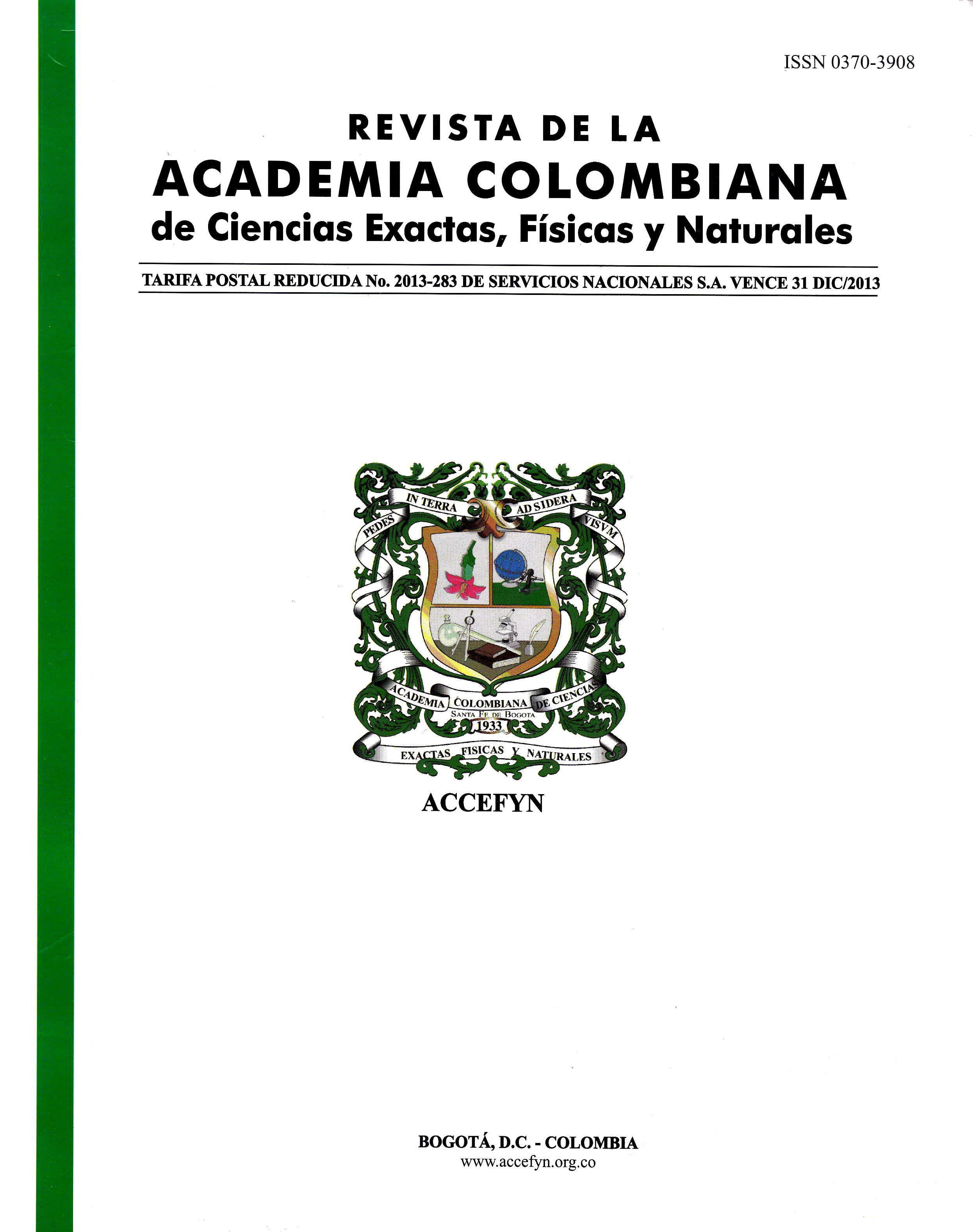Resumen
La representación de espacio-fase de campos ópticos en estados de coherencia espacial arbitrarios es una herramienta poderosa para determinar su propagación no-paraxial, sin restricción en distancia de propagación, tamaño de la fuente y área iluminada en el plano del detector. Este procedimiento tiene implicaciones fenomenológicas novedosas, siendo la más importante la modelación del campo óptico en términos de conjuntos discretos de fuentes puntuales radiantes y virtuales, donde el primero es obligatoriamente discreto, y el segundo representa el estado de coherencia espacial del campo. Además, sugiere un acercamiento novedoso entre las formulaciones clásica y cuántica de la óptica, conducente a nuevas áreas de estudio, al mostrar posibles correlatos clásicos de comportamientos que se han caracterizado como exclusivamente cuánticos.
Referencias
Young, T., The Bakerian lecture. Experiments and calculations relative to physical optics, Philosophical Transactions of the Royal Society of London 94 (1804) 1-16.
Grimaldo, F. M., Physico-Mathesis de Lumine Coloribus et Iride, Bononiae: Ex Typographia Haeredi Victorij Benatij, 1665.
Iizuka, K., Engineering Optics, Springer Verlag, Berlin, 1985. Sabra, A. I., The optics of ibn al-Haytham (2 Vols.), London, 1989. Castañeda, R., Un faro en la oscuridad, Cátedra abierta de Filosofía: Luces y Sombras en la Edad Media. Universidad de Antioquia, Abril de 2007.
Einstein, A., Zur Elektrodynamik bewegter Körper, Ann. Physik 17 (1905) 31.
Einstein, A., Über einen die Erzeugung und Verwandlung des Lichtes betreffenden heuristischen Gesichtspunkt, Ann. Physik 17 (1905) 17.
Eisberg, R y R. Resnick, Física Cuántica, Editorial Limusa, México, 1978 Mandel, L. and E. Wolf, Optical Coherence and Quantum Optics, Cambridge University Press, Oxford, 1995.
von Laue, M., Die Entropie von partiell kohärenten Strahlenbündeln, Ann. Physik 23 (1907) 1-43.
Van Cittert, P.H., Die wahrscheinliche Schwingungsverteilung in einer von einer Lichtquelle direkt oder mittels einer Linse beleuchteten Ebene, Physica 1 (1934) 201-210.
Zernike, F., The concept of Degree of Coherence and its application to optical problems. Physica 5 (1938) 785-795.
Hanbury-Brown R. and R. Twiss, Correlation between photons in two coherent beams of light, Nature 177 (1956) 27-29.
Svelto, O. and D.C. Hanna, Principles of lasers, Heyden, London, 1976. Padula, S., HBT interferometry: historical perspective, Braz. J. Phys. 35(2005) 70-99.
Glauber, R. J., The quantum theory of Optical Coherence, Phys. Rev. 130(1963) 2529-2539.
Castañeda, R., The Optics of Spatial Coherence Wavelets. In Peter W. Hawkes, editor: Advances in Imaging and Electron Physics, Vol. 164, Burlington: Academic Press (2010) 29-255.
Born, M. and E. Wolf, Principles of Optics 6th ed, Pergamon Press, Oxford, 1993.
Goodman, J. W., Introduction to Fourier Optics, McGraw-Hill, New York, 1968.
Castañeda, R. and J. Garcia-Sucerquia, Non-approximated numerical modelling of propagation of light in any state of spatial coherence, Opt. Express 19 (2011) 25022-25034.
Torre, A., Linear ray and wave optics in the phase-space, Elsevier, Amsterdam, 2005.
Castañeda, R., H. Muñoz-Ossa and G. Cañas-Cardona, The structured spatial coherence support, J. Mod. Opt. 58 (2011) 962-972.
Castañeda, R., G. Cañas-Cardona and J. Garcia-Sucerquia, Radiant, virtual, and dual sources of optical fields in any state of spatial coherence, J. Opt. Soc. Am. A 27 (2010) 1322-1330.
Castañeda, R., G. Cañas, and H. Vinck-Posada. Analogies between classical scalar wave fields in any state of spatial coherence and some quantum states of light. J. Opt. Soc. Am. A 29 (2012) 463-472.
Castañeda, R., G. Cañas-Cardona, J. González-Toro, H. Vinck-Posada. Classical modelling of the fourth-order spatial coherence state of scalar wave-fields. 22nd Congress of the International Commission for Optics: Light for the Development of the World, edited by Ramón Rodríguez-Vera, Rufino Díaz-Uribe, Proc. of SPIE Vol. 8011 (2011)80116F-1, 80116F-10.
Leonhardt, U., Measuring the quantum state of light, Cambridge University Press, 1997.

Esta obra está bajo una licencia internacional Creative Commons Atribución-NoComercial-SinDerivadas 4.0.
Derechos de autor 2023 Revista de la Academia Colombiana de Ciencias Exactas, Físicas y Naturales

